At Nexus of Independence: Marking 35 Years With a Classic Comic Character
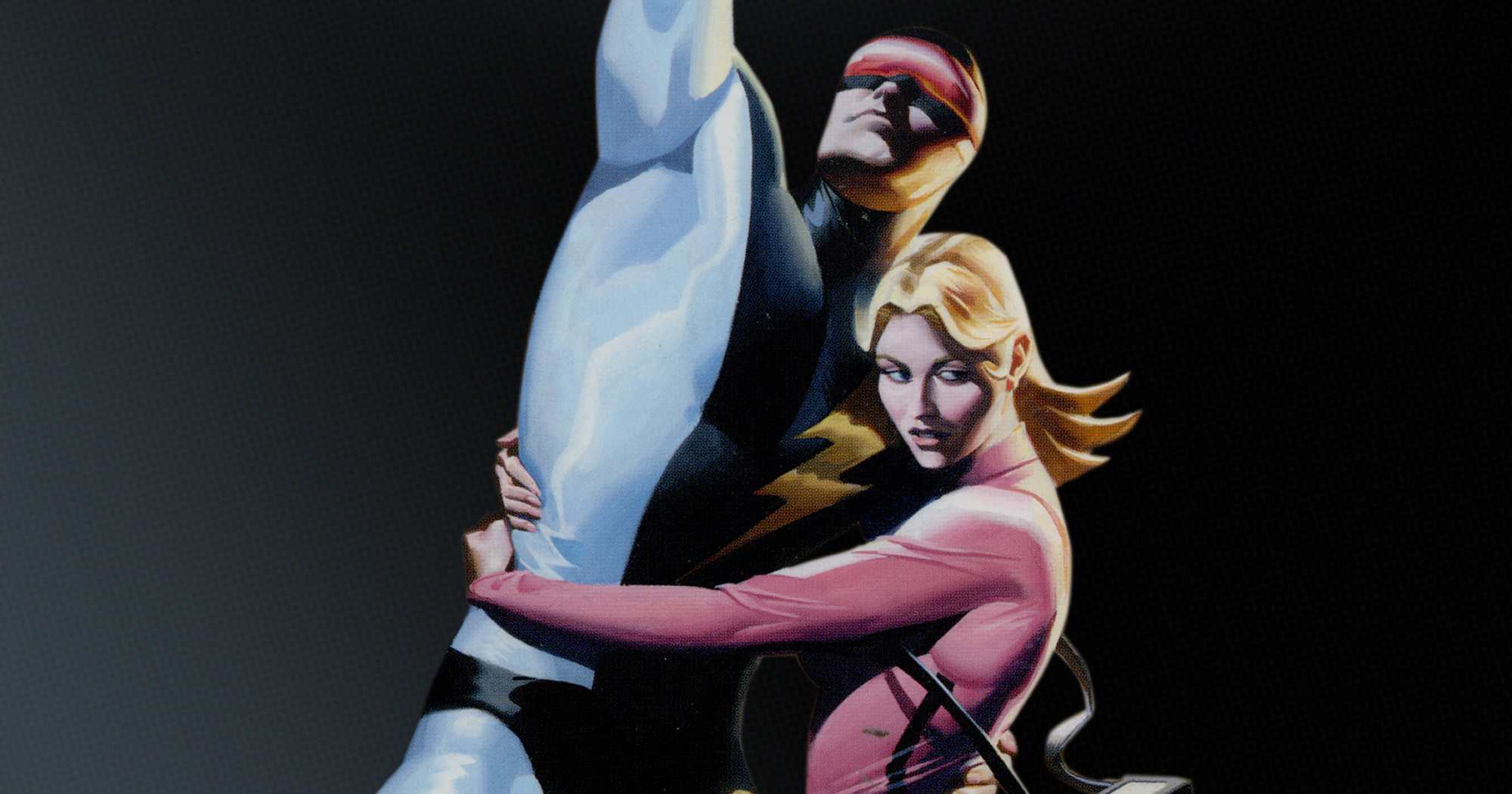
In 1979, Mike Baron, an aspiring writer and artist, met Steve Rude for the first time. “An editor from the Madison Press Connection phoned,” Baron recalls. “The editor said, ‘We got some guy down here trying to sell us his artwork and he draws just like you.’ Obviously, my friend was no art expert. I arranged to meet Steve on the steps of the Student Union. He opened his portfolio and I stopped drawing.”
Within a couple of years, they had created their character Nexus—a kind of reluctant cosmic executioner—and embarked on the beginning of what would become a long, strange career of ups and downs, and publishing in a wide variety of forms.
Nexus began as an oversized black-and-white comic, running three issues in that form, published by Capital Comics. The third issue famously included an audio flexi-disc, which featured a Nexus theme song (written by Baron), sound effects, narration, and a full cast. Capital then restarted the series in color.
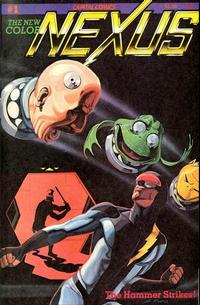
Nexus #1
These issues amazed the comic world, with Rude’s clean, distinctive art and Baron’s propulsive sci-fi plots, which managed to harness drama, humor, family life, politics, and questions of justice, in a universe as seemingly limitless as the potential for independent comics. Soon enough, however, those limits were revealed, as Capital Comics closed shop. Luckily, First Comics stepped in and continued Nexus; the series ran continuously for eighty issues.
After this “Golden Age” for Nexus (the term is used with regard to publishing—the quality of the series has remained largely undiminished), Baron and Rude showed admirable perseverance in keeping their signature creation alive. “The idea for a Nexus animated prime-time show really started to come into play when I moved from Madison, Wisconsin to L.A. in 1988,” says Rude. “I had fans in the animation industry and for several years many of those fans obsessively worked with me on making that show a reality. I eventually produced an actual two-minute pilot, which you can see on YouTube. Since that time I’ve done hundreds of layouts, storyboards, and scripts for an eventual Nexus TV show. So far, there is no show, because to have a show, you need to have someone in authority who ‘gets’ what you’re trying to do, and give it a firm green-light.”
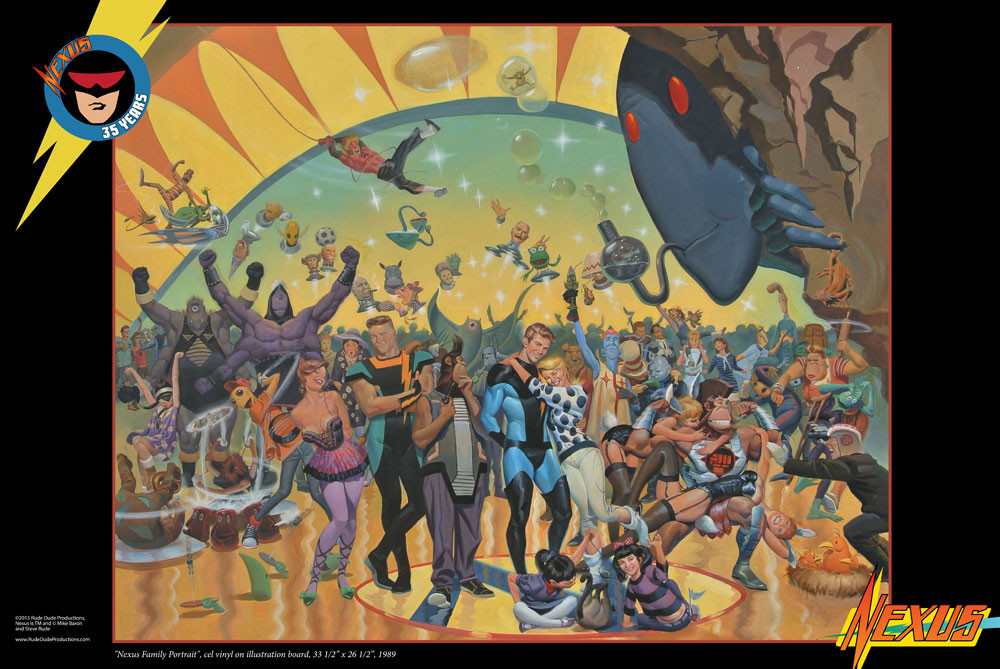
Nexus Family Portrait---35th Anniversary Print
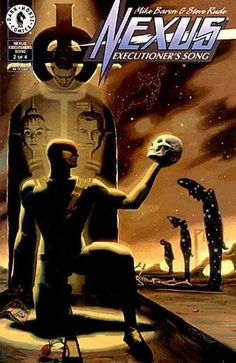
Nexus: Executioner's Song #2
While fans still hold out hope for the Nexus animated TV series, Baron and Rude found a new home for the character’s comic-book exploits. Dark Horse Comics published a number of Nexus miniseries, for which Baron and Rude later offered alternate numbering to more easily place them in the Nexus canon.
After a three-year hiatus, Nexus returned to Dark Horse Comics as a feature in Dark Horse Comics Presents, an anthology series. With fans accustomed to a solo Nexus comic, these endeavors garnered less press attention than hoped. “I decided it was time for a change, a drastic shift in presentation,” Rude says.
Enter Kickstarter. The crowdfunding site has played a valuable role in the comics industry, keeping beloved characters and respected creators in the public eye despite the vagaries of the comic book publishing market. In 2015, Rude launched a successful Kickstarter project to bring Nexus to one of the few formats in which the character had never apppeared—a newspaper strip. Reminiscent of the nearly extinct, classic full-page Sunday color spreads, the broadsheet newspaper size (17“ x 22.5“) shows off Rude’s art in a spectacular new way.
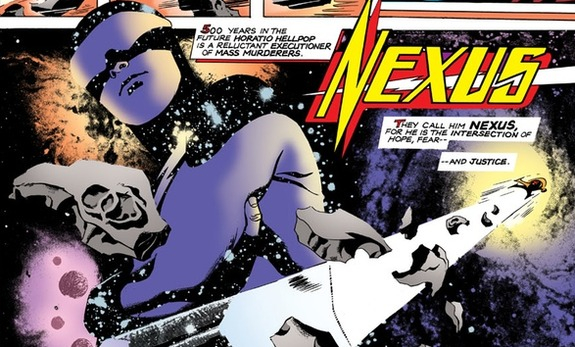
Nexus Newspaper Strip
As with other teams that have stayed together over long periods of time, Rude and Baron have shown a dedication to their craft and and a willingness to overcome the ups and downs of any creative partnership. “We’re a team, and you don’t desert your partner,” Rude says. The pair of creators keep busy with other projects as well: Baron writes Badger (another comic dating to the Capital days) for the modern incarnation of First Comics, and also writes novels; Rude is mostly focused on Nexus and the publishing duties of the newspaper strip, but also devotes time to his character The Moth, and occasional assignments for other comics companies.
Rude and Baron enjoy the luxury of control—like many budding creators, they relinquished the rights to their characters when they signed their first deal with Capital, but, Baron says, “Mike Richardson [Publisher of Dark Horse Comics] returned all copyright and trademark to Nexus to us. An unprecedented act of generosity.”
Dark Horse still represents the pair’s film interests, and Rude calls Richardson “The most determined advocate to promote Nexus in Hollywood,” going on to say, “if there’s ever a live-action Nexus movie, Mike Richardson will be the man responsible for it.”
Black and white, color. Capital, First, Dark Horse, Rude Dude Productions. Comic book, record, graphic novel, cartoon, newspaper strip, and maybe one day, feature film. There’s no telling what exactly the future may bring, but after thirty-five years, there’s still every indication that Nexus will continue—one way or another.

Peter Dabbene wrote the graphic novels Ark and Robin Hood. He is a reviewer for Foreword Reviews, and his poetry and stories have been published in many literary journals, collected in the photo book Optimism, and in the story collection Glossolalia. His latest books are Spamming the Spammers and More Spamming the Spammers.
Peter Dabbene
